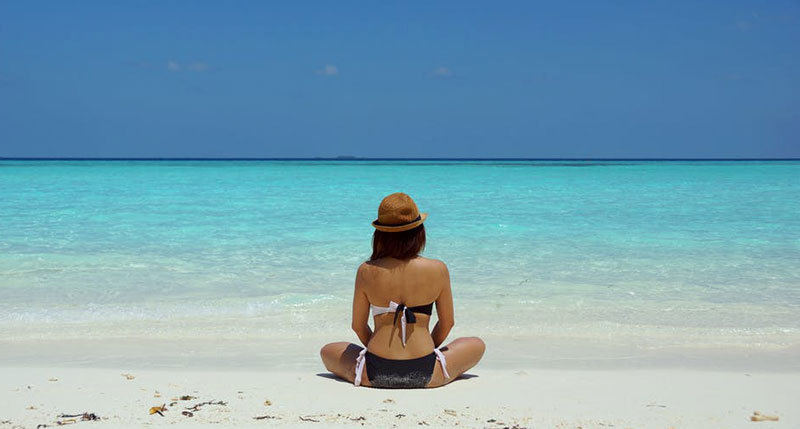Now that summer weather is upon us and people are spending more time outside of their homes after months inside during the shutdown, it’s an excellent time to review solar safety tips and safe sun behaviors.
The sun is the life force of our planet, and in small doses can be beneficial to human health. When exposed to the ultraviolet rays in sunlight, your skin has the ability to synthesize Vitamin D, which is proven to have many protective and beneficial effects–including raising immune function.
However, if you stay too long in the sun without sunscreen, your skin will suffer a sunburn. It’s a proven fact that sunburns increase your risk of developing skin cancer and increase the effects of photo-aging. Skin cancer is now our nation’s most common cancer: 1 in 5 Americans will develop it within their lifetimes. Minimizing your sun exposure will limit your exposure to damaging UVA and UVB rays and lower your skin cancer risk. You can also lower exposure by using broad-spectrum sunscreen every time you go outside into the sun.
When in doubt, use sunscreen, and if you think it’s time to reapply, do so! After all, once your skin is sunburned, you can’t go back and apply sunscreen or spend less time in the sun. Prevention is the key.
By adopting smart behaviors, you’ll lower your risk for experiencing a damaging—and painful!—sunburn as a result of time spent outside this summer.
Here are 6 tips for safe sunning:
- Sunscreen, sunscreen, sunscreen. No matter what skin tone you have, everyone needs to wear sunscreen. While higher levels of melanin in darker skin can provide some protective effect, no human skin is immune to the damage caused by prolonged exposure to UV radiation. Wear a sunscreen of at least SPF 30 or higher to protect your skin from burning.
- Consider barrier protection from the sun. A wide-brimmed hat and SPF-rated clothing are two good choices if you’ll be outside for long hours. You can also consider carrying an umbrella to provide additional personal shade. Speaking of shade, seeking the shade of trees, buildings and covered areas is a smart habit.
- Avoid the sun between 10 am and 4 pm. These are the hours when the sun is at its peak, and the sunlight exposure is strongest and potentially most damaging. Plan your outings and outdoor activities earlier in the morning before 10 am or later in the afternoon after 4 pm.
- Protect babies from the sun. While The American Academy of Pediatrics warns against using sunscreen regularly on children under the age of 6 months, they still need protection from the sun’s damaging rays. Their delicate skin has very little melanin and is therefore at high risk of sustaining sun damage even with limited exposure. Use a baby stroller with a hood or canopy to cover them and provide shade. Put a wide-brimmed hat on their heads, and whenever they go outside, make sure it’s always in a safe, shady spot. If no shade is available, parents may use small amounts of SPF 15 (or higher) sunscreen on a baby’s hands or face. However, dressing your baby in long pants and long sleeves made of lightweight, tightly-woven cotton clothing and a hat is the safer alternative.
- Kids and sunscreen: Reapply, reapply, reapply. Did you know that most of our accumulated sun damage over our lifetime occurs when we’re children? Babies over the age of 6 months and all kids can use sunscreen—look for kid-friendly varieties that make application fun, including spray applicators and sunscreens that change color when applied to the skin. You’ll need to make application fun because kids who are playing outdoors and sweating—or swimming—will need to reapply sunscreen at least every 2 hours, sometimes more often. Also, don’t forget to buy them a pair of high-quality sunglasses to protect their eyes (more on that below).
- Remember to wear your sunglasses. Just as skin can be damaged by prolonged, unprotected exposure to the sun’s ultraviolet rays, so can eyes. UV exposure is a significant contributor to conditions including cataracts, macular degeneration and skin cancer around the eyes. When choosing sunglasses, make sure to buy high-quality lenses that block at least 99% of both the sun’s ultraviolet A and B rays, both of which can damage your eyes.
Practice safe sun behaviors to enjoy your summer outside in the sun!

